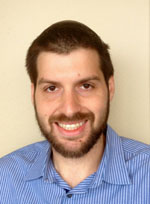By Jacob Kamaras

SAN DIEGO — Prof. David Golomb, head of the Zlotowski Center for Neuroscience at Ben-Gurion University of the Negev (BGU) in southern Israel, is among the researchers collaborating with University of California San Diego on a $21 million project that will strive to enhance understanding of how the brain works.
The funding comes in the form of a grant from the Brain Research Through Advancing Innovative Neurotechnologies (BRAIN) Initiative of the National Institutes of Health (NIH). UC San Diego’s Distinguished Professor of Physics and Neurobiology David Kleinfeld, a leading expert in sensory processing and mouth-face-head movements, is leading the team of researchers in studying the coordination of multiple sensory inputs and head movements using laboratory mice and rats.
As part of the team, BGU’s Golomb will use circuit dynamics to model the biomechanics of sensory organs like the vibrissae and tongue. Kleinfeld and Golomb are joined by researchers from Massachusetts Institute of Technology, and Johns Hopkins University.
“This NIH grant is a tremendous achievement that further showcases the immense talent of our faculty for groundbreaking research and collaboration across universities and disciplines,” UC San Diego Chancellor Pradeep K. Khosla said. “David’s work will move us even closer to unlocking one of the universe’s great mysteries: the brain.”
UC San Diego explained that sensory processing “is a matter of survival. Sight, smell, touch, taste and hearing — the coordination of these senses together helps them find food, return to shelter and escape danger.”
More than a decade ago, Kleinfeld and colleagues began investigating rat whiskers — called vibrissae — and their underlying nerve circuitry. They discovered that the motor nerves moving the vibrissae are separate from the sensory nerves receiving the signal from the environment, even though the two were exquisitely attuned to each other.
Over the next 10 years, through a series of research endeavors, the team was able to work out the neurocircuitry in considerable detail. They learned that the movement of the vibrissae, as well as the licking of the tongue — which can act as a sort of one-fingered hand in rodents — were ultimately coordinated by the pre-Bötzinger complex, a region of the brainstem that also regulates respiration.
This coordination occurs as a hierarchy of controls, and the research under the NIH grant will investigate the hypothesis that rodent facial and head movements are controlled by both low-order and high-order brain activity. At the low level, a series of interacting oscillators in the brainstem control the sensations associated with the head, while high-level control associated with the motor cortex fine tunes the relative movement of the head, tongue and vibrissae.
“What we hope to accomplish in the end is to get a picture of the motor control that allows rats to coordinate all these sensory inputs, and how they use sensory signals in a feedback loop to enhance this coordination,” Kleinfeld said.
From BGU’s perspective, research excellence such as Golomb’s work is a key component of “Way Forward,” the University’s ongoing $1 billion global fundraising campaign to strengthen the future of Israel through its South. As the largest employer in the region, BGU is key to the economic vitality of southern Israel and will play a pivotal role in rebuilding the Negev and propelling it forward following the tragic events of October 7th.
The $1 billion raised in the Way Forward campaign will support BGU’s capital building and expansion projects ($500 million), student access and support ($250 million), and research excellence ($250 million).
“On October 6th, it was already evident that the future of Israel is in the South and that Ben-Gurion University would drive that future. On October 7th, BGU’s community was disproportionately affected by the attacks. In the days that followed, the University began demonstrating just how vital it is to the remarkable resilience of the entire nation,” said Doug Seserman, CEO of Americans for Ben-Gurion University (A4BGU). “Through this historic campaign, Diaspora supporters are rallying around Israel’s essential efforts to rebuild the South, with the University leading the way forward as both the epicenter of the region and the key to its recovery.”
Read the original story via UC San Diego here.
*
Public relations executive Jacob Kamaras is a former publisher and editor of San Diego Jewish World and an ongoing contributor.